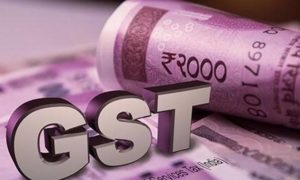The five key differences between the Unified Pension Scheme (UPS) and the Old Pension Scheme (OPS) are – Differences in pension calculation, employee contribution to UPS, tax benefits, higher minimum pension in UPS and lumpsum payments.
Also Read– Big News For Central Government Employees: Pensions Hiked To This Much Under Unified Pension Scheme
The Government of India has announced the Unified Pension Scheme (UPS), a new pension plan for employees working under the government. The new scheme will provide an assured pension scheme to benefit nearly 90 lakh pensioners under the central government.
The central government launched the UPS to cater to the demands of the employees regarding a lower corpus and lower returns from the National Pension Scheme (NPS) and the rollback of the Old Pension Scheme (OPS).
Also Read– 5 Risks In Mutual Funds Investments
Here are five key differences between UPS and OPS:
1. Differences in pension calculation: The Old Pension Scheme (OPS) and the Unified Pension Scheme (UPS) have different ways to calculate the pension amount. Under the old scheme, the assured pension was fixed at 50 per cent of the last base salary plus dearness allowance (DA). Compared to the new scheme of UPS, the assured pension in the UPS will be the average basic salary plus the DA drawn in the previous year before superannuation. This means that when government employees retire, they will get 50 per cent of the average of last year’s salary plus the DA. If an employee gets promoted to a higher pay scale for the last few months, they will get a slightly lower amount as it would be 50 per cent of the average of the last year.
2. Employee contribution to UPS: Under the UPS scheme, an employee must contribute a share to the pension fund, similar to an employee contribution to the National Pension System (NPS). The contribution amount is 10 per cent of the basic pay, and the DA under UPS and the government will also contribute 18.5 per cent, compared to the previous 14 per cent to the UPS, as per a Times of India report. In the OPS, employees did not make contributions.
Also Read– Unified Pension Scheme: Understand UPS In 10 Points, Know Eligibility and All Other Details
3. Tax benefits: Central government employees are eligible for tax benefits for the government’s contribution to the NPS scheme. They can deduct 14 per cent under the Income Tax Act 1961 from both the old and new taxation regimes. As there were no employee contributions to OPS, they cannot reap tax benefits.
4. Higher minimum pension in UPS: Under the UPS scheme, the minimum pension offered per month is ₹10,000 at the time of retirement after a 10-year minimum service. The present minimum amount is ₹9,000 after the ten-year minimum service period.
5. Lumpsum payments: Under the UPS, lumpsum payments are offered at the time of superannuation. It will be calculated as one-tenth of monthly salary plus DA, as on the date of superannuation for every six months of service completed. It will not reduce the quantum of the pension, according to the government release. Unlike under OPS, which enables the lumpsum to be taken at retirement through commutation of pension, which reduced the pensions amount.
Read More:- The case for investing in large and midcap mutual funds
Under the OPS, a government employee can commute a portion of the pension, not exceeding 40 per cent, into a lumpsum payment. However, there is a common features between the Unified Pension Scheme (UPS) and the Old Pension Scheme (OPS).
The availability of inflation-indexed pensions to compensate for the increasing cost of living is a common feature in the UPS and OPS schemes. In the OPS, the pension is revised twice a year, on January 1 and July 1, when the government announced a hike in the dearness allowance and the relief. In the UPS, indexation of inflation will be applied to the minimum pension amount the dearness relief on All India Consumer Price Index for Industrial Workers (AICPI-IW), so is the case of service employees will be given under the scheme, said the government.
For more news like this visit Officenewz.com





































